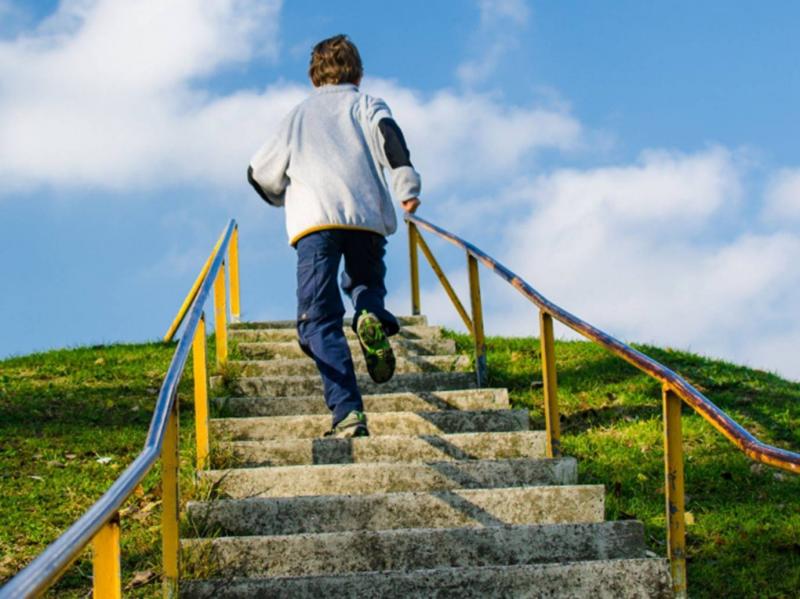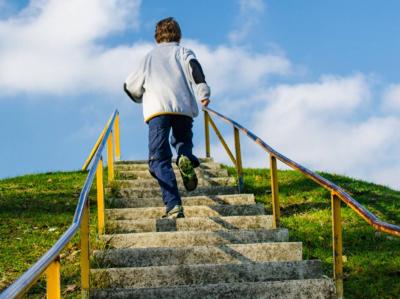Experts warn against ceasing to climb stairs in homes or buildings and relying on elevators at an early age, as it can actually accelerate age-related decline, leading to a phenomenon currently referred to as "one-floor legs." According to an article published by the British Daily Mail, this term refers to the gradual weakening of leg muscles, which often appears in individuals who have moved to a single-story residence or ground floor and live without regularly using stairs.
Dr. Caroline Grigg, a specialist in musculoskeletal aging and health at the University of Birmingham, states that these individuals "lack continuous and active movement, which raises specific concerns about accelerating the decline" of aging symptoms.
#### Curbing Physical Decline
Dr. Grigg explains that "climbing stairs is a very good way to maintain or improve muscle strength. If there are many steps, it also provides an unintentional workout." The extent to which home environment directly influences any physical decline was the subject of a study conducted in 2018 in Japan, involving over 6,000 people aged 65 and older living in either single-story homes, homes accessible by elevator, or homes with high stairways over three years. The results, published in the journal BMC Geriatrics, revealed that having stairs in the home seems to help curb age-related physical decline.
#### The Solution Lies in Movement
Victoria Rindl, a physiotherapist in Devon who specializes in treating elderly patients, notes that when a person stops engaging in regular activities, they lose the ability to perform them afterward. Typically, among older adults, decline may have already begun before their legs shrink to what is described as "one-floor legs." However, if stair climbing is abandoned and physical activity noticeably decreases, the situation deteriorates at a faster pace.
Rindl adds, "Of course, some decline occurs as a person ages, but many mobility issues stem from bad movement habits that develop, for example, in those who have a back problem or a significant injury, but the bad habits remain once the underlying pain is resolved." She clarifies that "instead of addressing underlying issues, such as muscle stiffness or weakness, there is a misconception that they are merely a result of aging. The truth is that these issues can often be addressed. Seeing a doctor who can identify what works or doesn’t and maintaining activity as much as possible is essential." The beauty of climbing up and down stairs is that it engages four major muscle groups and maintains the strength of key joints.
#### Youthfulness at 80
From the age of forty onwards, individuals lose about 0.5% or slightly more of their muscle mass each year. Dr. Grigg mentions that "when a person reaches their eighties, they have only half to two-thirds of the muscle mass they enjoyed when they were younger." Victoria Rindl states, "The good news is that exercise can enhance muscle strength and counteract aging symptoms. Thus, an 80-year-old athlete can possess significantly more muscle mass and function than a younger individual, provided they engage in regular exercise and commit to climbing stairs, implying more physical activity."
#### The Opposite is True
While many individuals may move from their homes to purchase new single-story residences or ground-floor apartments out of fear of falling on stairs, the decline they may suffer in muscle strength from not using stairs could actually make falling more likely. Dr. Grigg points out that "muscle strength is key to maintaining balance and preventing falls. Therefore, exercises and climbing stairs instead of using elevators, as well as other activities that improve balance when rising from a chair, can reduce falls. It’s crucial for the elderly to remain active."




